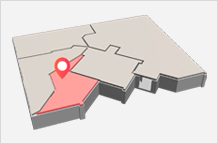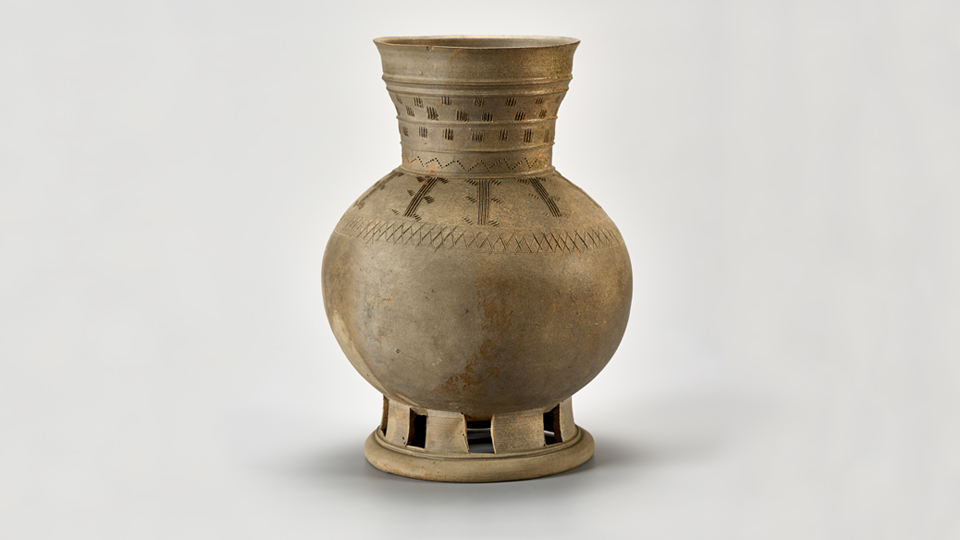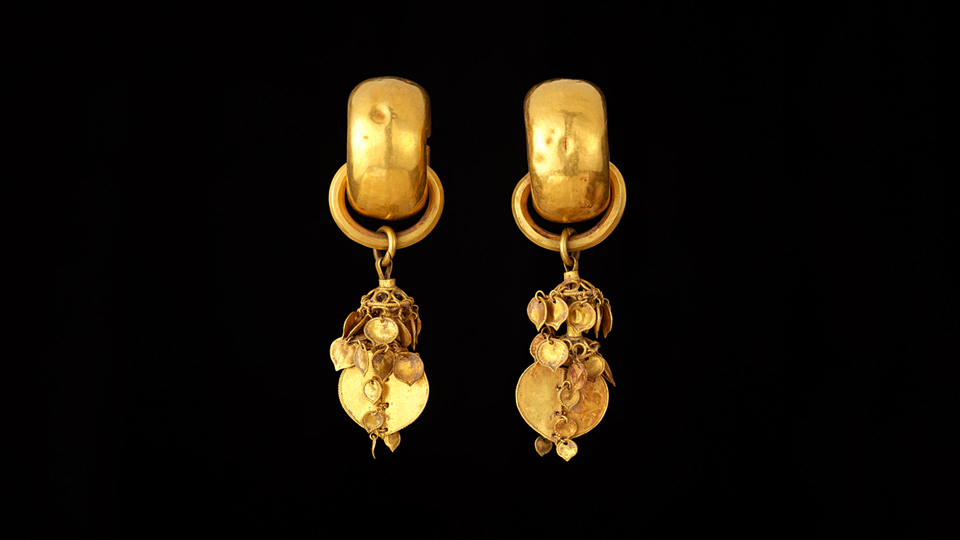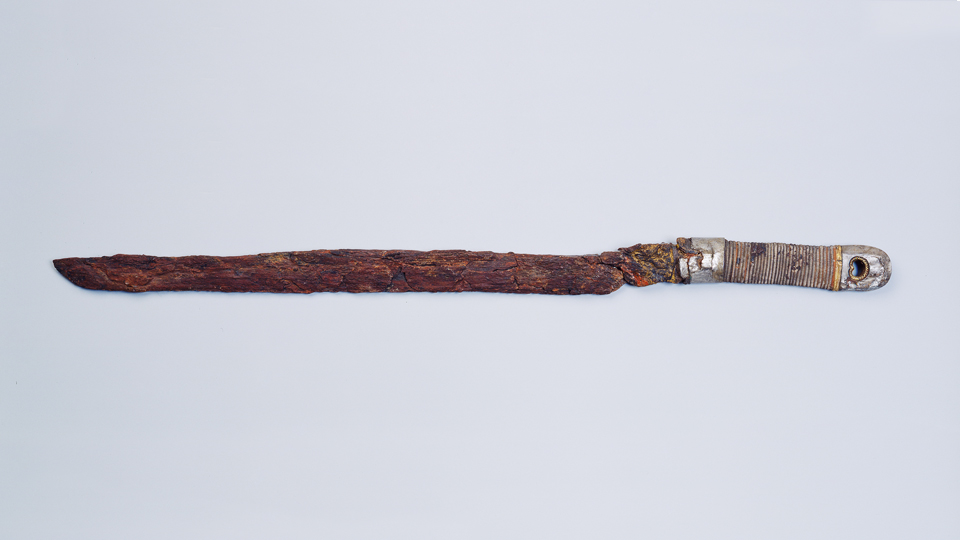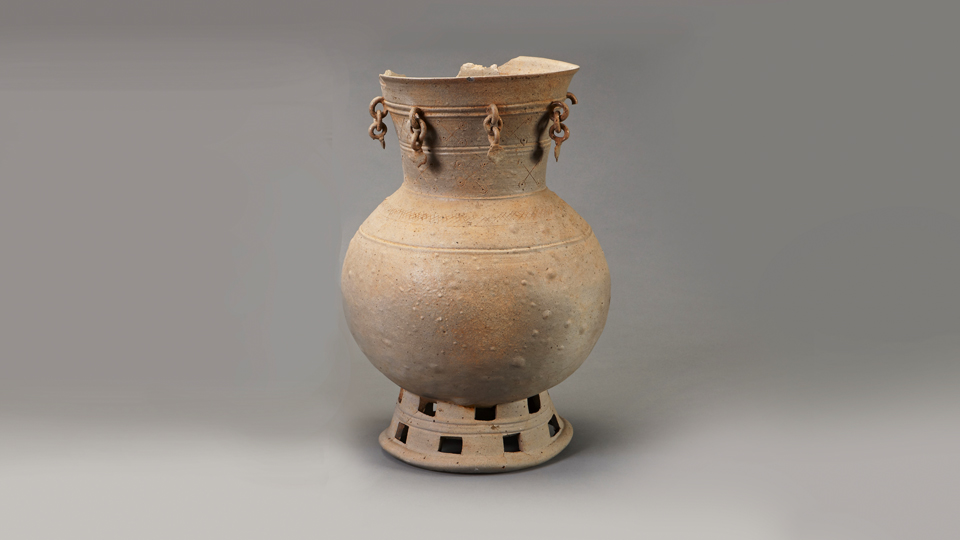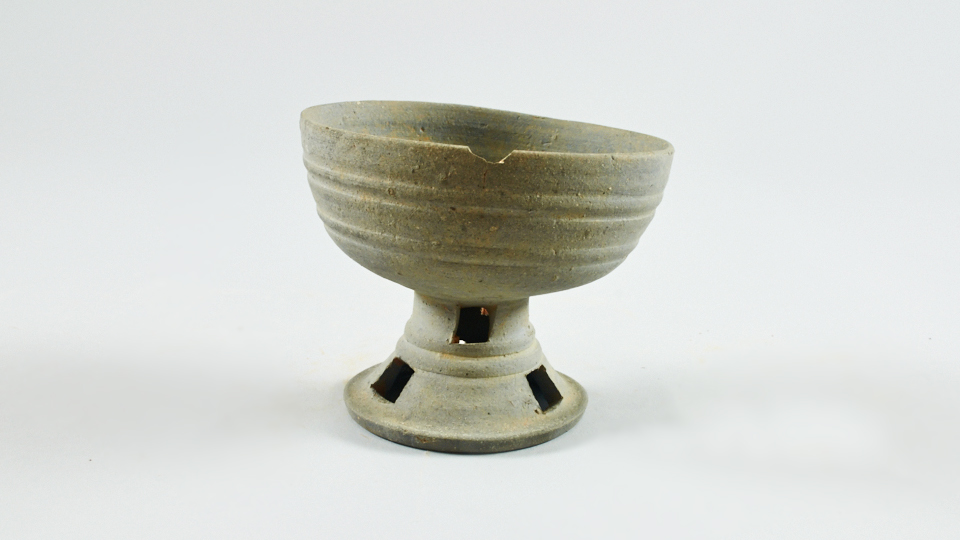Expansion of Silla Influence
Geumgwan Gaya, whose development was based on intermediary trade along the southern coast, reached its heyday in the 4th century but suffered a major blow in 400 CE following a combined attack from Goguryeo and Silla forces. Aerwards, the various polities of Gaya began to be influenced by Silla expansion. Silla culture spread first to Bihwa Gaya, located east of the Nakdong River, and in 532 CE, King Kim Guhae of Geumgwan Gaya surrendered to Silla. Silla continued its advance into the regions located to the west of the Nakdong River and finally conquered Dae Gaya in 562 CE, causing Gaya to disappear into history. Gaya’s diverse cultures were transformed into local Silla cultures, traces of which can be found in the sites and artifacts of Gaya’s old territory.
The Changnyeong region is recorded as ‘Bisabeol (比斯伐)’, ‘Bihwa (非火)’, etc. in Samguk Sagi (History of the Three Kingdoms) and Samguk Yusa (Memorabilia of the Three Kingdoms). This region includes the area where the tributaries of the Hwang River and Nam River, which pass through the lands of the various Gaya polities, converge with the Nakdong River, and so has been a major center of cultural exchange. Paradoxically, this geographical advantage meant that the this region was the first to be influenced by Silla forces attempting to advance into Gaya. The spread of Silla culture at the time can be observed in the huge tombs of the Changnyeong region.
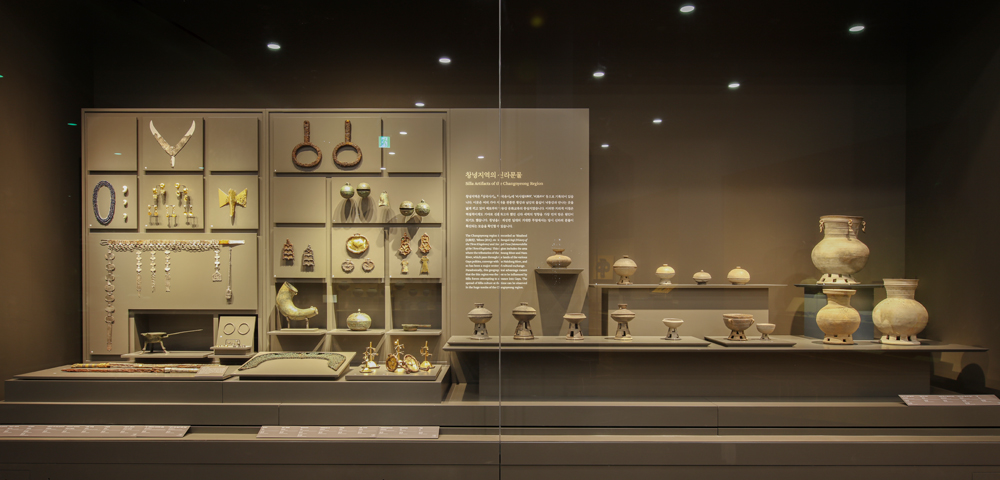
-
Mounted Jar with Long Neck Gyo-dong, Changnyeong,
Height: 37cm -
Gold Earrings Gyo-dong, Changnyeong,
Length: 8.5cm -
Round Pommel Sword with Inscription Gyo-dong, Changnyeong,
Length: 85cm
Silla’s short-mounted dishes and long-necked mounted jars are the representative pottery types that were popular in the mid-6th century. Around this time, these vessels began to be buried in major tombs throughout Gaya. Tomb architecture also changed, from stone lined tombs to Silla-style stone chamber tombs. This change is an archaeological phenomenon that can be observed in the tombs of Gaya’s old territory, including Gimhae, Haman, Goseong, Hapcheon, and Goryeong. It symbolically shows the transformation of Gaya into a province of Silla.
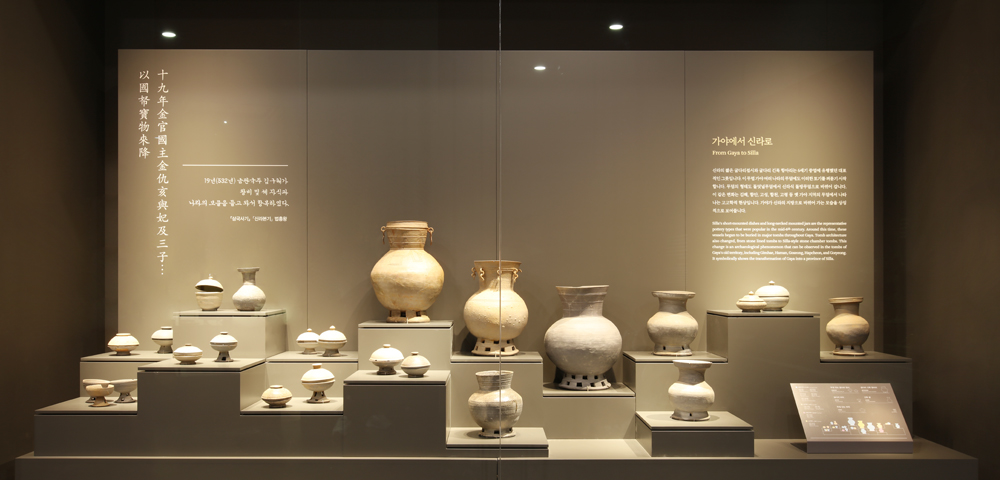
-
Mounted Jar with Long Neck Naesan-ri, Goseong,
Height: 43cm -
Mounted Bowl Hwajeong, Gimhae,
Height: 9cm -
Bowl with Lid Jisan-dong, Goryeong,
Height: 5.2cm

